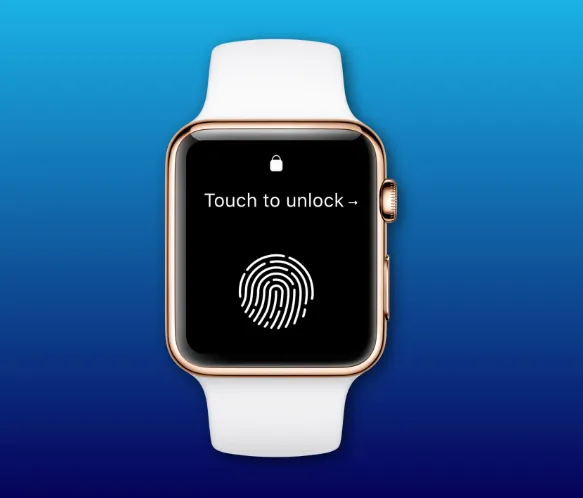In what could be a major upgrade for Apple’s wearable technology, new internal code suggests that the Apple Watch might soon incorporate Touch ID, the company’s fingerprint recognition system. The discovery, uncovered by Macworld, points to a codename “AppleMesa” which appears to be Apple’s internal reference for the Touch ID feature. While iPhones, iPads, and Macs have been using biometric authentication for years, the Apple Watch has stuck with traditional PIN entry for unlocking—until now. These new findings indicate that Touch ID could become a game-changer for future Apple Watch models.
What Touch ID Could Mean for the Apple Watch
Fitting biometric authentication into the compact design of the Apple Watch presents some unique challenges. However, Apple has already explored potential solutions, as evidenced by previous patents. One of the more likely implementations could involve embedding the Touch ID sensor into the side button of the watch, similar to the design seen on the iPad Air. If this plan comes to fruition, it would allow users to easily unlock their Apple Watch, authorize payments, or confirm actions using just their fingerprint.
This addition would offer an entirely new level of convenience for users. Currently, unlocking the Apple Watch requires a PIN code, which, while secure, can be cumbersome. With Touch ID, users would be able to access their device in a matter of seconds, simply by placing their finger on the side button. This seamless experience would not only improve usability but also enhance the security of the device, which holds increasingly sensitive data such as health metrics, financial information, and private messages.
When Can We Expect Touch ID on the Apple Watch?
Despite the promising news, analysts caution that the Touch ID feature is still in the early stages of development. The fact that it has yet to appear in any version of watchOS indicates that Apple is still conducting internal tests. While this discovery stirs excitement, it’s likely that any public rollout of the feature won’t occur until at least the 2026 iteration of the Apple Watch. This timeline would allow Apple to perfect the technology and incorporate it into a new generation of watches.
Reports suggest that when the feature does arrive, it could coincide with other significant updates. Rumors point to potential design changes, improvements in battery efficiency, and the addition of more sensors, particularly in the Ultra models. These advancements would help position the Apple Watch not only as a wearable for fitness and notifications but as a full-fledged health and lifestyle companion.
Why Touch ID on the Apple Watch Matters
Adding Touch ID to the Apple Watch would be a major step forward in the device’s security features. The Apple Watch already handles critical functions like tracking heart rate, ECG readings, and blood oxygen levels, and with the ability to make payments directly from the watch via Apple Pay, it has become an essential tool for millions. Given this, the introduction of a more secure biometric authentication method could be crucial.
Beyond just unlocking the device, Touch ID could be used to authorize payments or access sensitive apps, making the Apple Watch not only more secure but also more useful in everyday life. For example, users could unlock their watch to make a payment with Apple Pay or access private health data, all with just a quick fingerprint scan. This type of biometric security could help users feel more confident using their watch for even more functions that require privacy and protection.
Looking Ahead: The Future of Apple Watch Security
The move to include Touch ID could signal a broader shift in how Apple approaches security on its wearable devices. Currently, many Apple Watch users rely on the device’s passcode or rely on their iPhone to unlock the watch. Touch ID would be a welcome upgrade, especially in a world where personal security and privacy are becoming more critical every day.
Although Apple has not confirmed this feature, the discovery of the internal code adds weight to ongoing speculation that the company is gearing up for a major leap forward in smartwatch technology. With stronger security, better usability, and advanced health-tracking capabilities, the next generation of the Apple Watch could redefine what a wearable can do.
As the Apple Watch continues to evolve, Touch ID would undoubtedly be a welcome addition, offering a seamless, secure, and user-friendly experience. For now, we can only wait for the official word from Apple. But given the growing importance of security in digital life, it seems likely that the Apple Watch will soon take another major step toward becoming an even more indispensable device in our daily routines.
